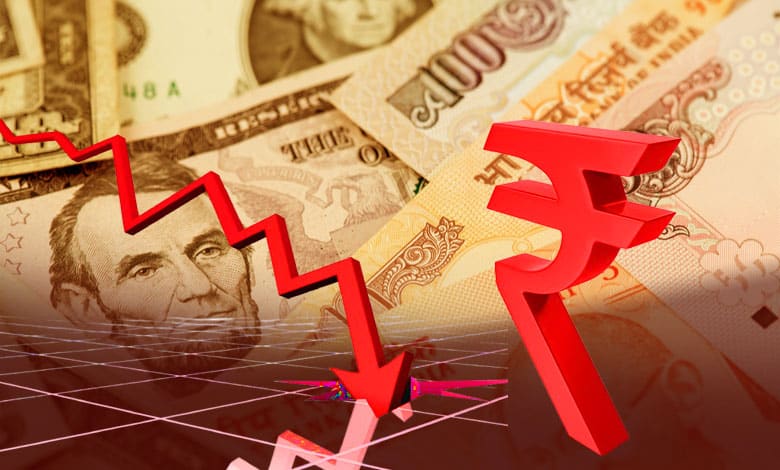Indian Rupee Hits Record Low: Is a Global Trade War Behind the Fall? Here is What We Know
Indian rupee hit a record low of 87.29 against the U.S. dollar, triggered by fears of a global trade war following new tariffs imposed by President Trump. Here's what we know about the currency's sharp decline and its impact on markets.

The Indian rupee suffered a significant setback on Monday, falling to an all-time low of 87.29 against the US dollar. This dramatic depreciation of 67 paise came amid mounting concerns over the potential escalation of a global trade war following the imposition of new tariffs by U.S. President Donald Trump on Canada, China, and Mexico.
Table of Contents
The Impact of Tariffs on the Currency
The rupee’s sharp fall was driven by fears that Trump’s aggressive tariff measures could spark a broader trade war, which in turn could destabilize global markets. On Monday, the U.S. President imposed 25% tariffs on goods from Canada and Mexico, as well as a 10% tariff on Chinese imports. This move has set off a chain reaction of financial market anxiety, with forex traders noting increased volatility in the global economy.
At the interbank foreign exchange market, the Indian rupee opened at 87 and continued to weaken, ultimately hitting the record low of 87.29 against the U.S. dollar. The domestic currency had closed flat at 86.62 on the previous Friday.
Rising Demand for the U.S. Dollar and Foreign Fund Outflows
Forex analysts pointed out that the rupee’s struggles were exacerbated by a combination of factors. Amit Pabari, Managing Director of CR Forex Advisors, explained, “The financial markets were on edge as U.S. President Donald Trump imposed duties on imports from Mexico, Canada, and China. This escalating trade war has prompted a flight to safety, pushing demand for the U.S. dollar higher, which surged toward the 109.50 levels.”
Additionally, consistent foreign fund outflows from India, coupled with the strengthening U.S. dollar, have created further downward pressure on the rupee.
Global Markets React to Trade War Fears
As news of the tariff imposition spread, global markets followed suit, with major Asian indices also trading in the negative territory. Investors are increasingly concerned about the potential long-term consequences of this trade conflict, with the possibility of additional tariffs being imposed on other countries in the future.
Impact on Indian Market and Investor Sentiment
Despite a positive outlook from India’s recent Budget announcement, the country’s financial markets are not immune to the effects of the global trade war. V K Vijayakumar, Chief Investment Strategist at Geojit Financial Services, observed, “Despite an excellent Budget, the market will be under pressure from the Trump tariffs and the heightened global uncertainty these ‘initial round of tariffs’ has triggered. While India may not be immediately affected, the surge in the dollar index above 109.6 will likely result in increased selling by foreign institutional investors (FIIs), putting additional strain on the market.”
Looking Ahead: Uncertainty and Risks
With the possibility of further tariffs and retaliatory actions from other countries, the global economic outlook remains uncertain. As the U.S.-China trade war continues to evolve, the Indian rupee and other emerging market currencies could face further challenges. The near-term outlook for the Indian rupee remains bleak, with market participants closely watching the developments in international trade relations.
As fears of a full-blown trade war grow, the impact on the Indian economy, especially on foreign investment and currency stability, will become clearer in the coming weeks. For now, traders remain cautious as the currency faces heightened volatility and risk.

